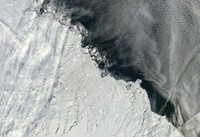Advertisement
Grab your lab coat. Let's get started
Welcome!
Welcome!
Create an account below to get 6 C&EN articles per month, receive newsletters and more - all free.
It seems this is your first time logging in online. Please enter the following information to continue.
As an ACS member you automatically get access to this site. All we need is few more details to create your reading experience.
Not you? Sign in with a different account.
Not you? Sign in with a different account.
ERROR 1
ERROR 1
ERROR 2
ERROR 2
ERROR 2
ERROR 2
ERROR 2
Password and Confirm password must match.
If you have an ACS member number, please enter it here so we can link this account to your membership. (optional)
ERROR 2
ACS values your privacy. By submitting your information, you are gaining access to C&EN and subscribing to our weekly newsletter. We use the information you provide to make your reading experience better, and we will never sell your data to third party members.
Environment
Sulfate aerosols implicated in global warming slowdown
Increased emissions in China combined with decreased emissions in North America and Europe temporarily slowed warming
by Jyllian Kemsley
June 27, 2016
| A version of this story appeared in
Volume 94, Issue 26
The rise of global mean surface temperatures slowed in the first years of this century. Scientists have pinpointed variation in Pacific Ocean surface temperatures that occur over timescales of decades as the primary cause of this warming slowdown.
But the shift of this so-called Pacific Decadal Oscillation (PDO) to a cooler phase may not have been an all-natural event. Instead, changes in fossil-fuel emissions may have driven the swing, according to a climate modeling study by a team from the U.K. government weather and climate office (Nat. Clim. Change 2016, DOI: 10.1038/nclimate3058).
Sulfur dioxide released by fossil-fuel combustion leads to the formation of sulfate aerosols, which reflect sunlight and consequently have a local cooling effect. In China, an increase in emissions and aerosols resulted in cooling during the time period studied. In North America and Europe, decreasing emissions and aerosols resulted in warming.
The consequence was a strengthening of the Pacific trade winds, which acted to bury heat below the water’s surface, says Doug M. Smith, who led the work. The modeling cannot say for certain whether the effect pushed the PDO into a cooler phase or strengthened what was already happening naturally.
The modeling study further indicates that as China reduces emissions to improve air quality, the PDO may move into a warmer phase and drive global surface temperatures to increase faster. “There are some signs that this could be happening now, but we need more years to know for sure,” Smith says.



Join the conversation
Contact the reporter
Submit a Letter to the Editor for publication
Engage with us on Twitter